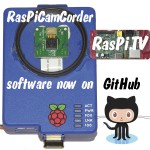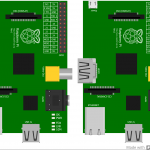
For a long time I’ve wanted to have a go with one of these 8×8 led arrays. I always thought they look like lots of fun. Searching around, I happened across Richard Hull’s Github repo, which provides a set of Python drivers and installation instructions for this 8×8 led array… …which can be had, if you’re willing to wait a week or two, for a little over £2 ($3) delivered from Banggood Assembly It comes in kit form and takes about 10 minutes to solder up, if you’re not new to soldering. There are no […more…]








